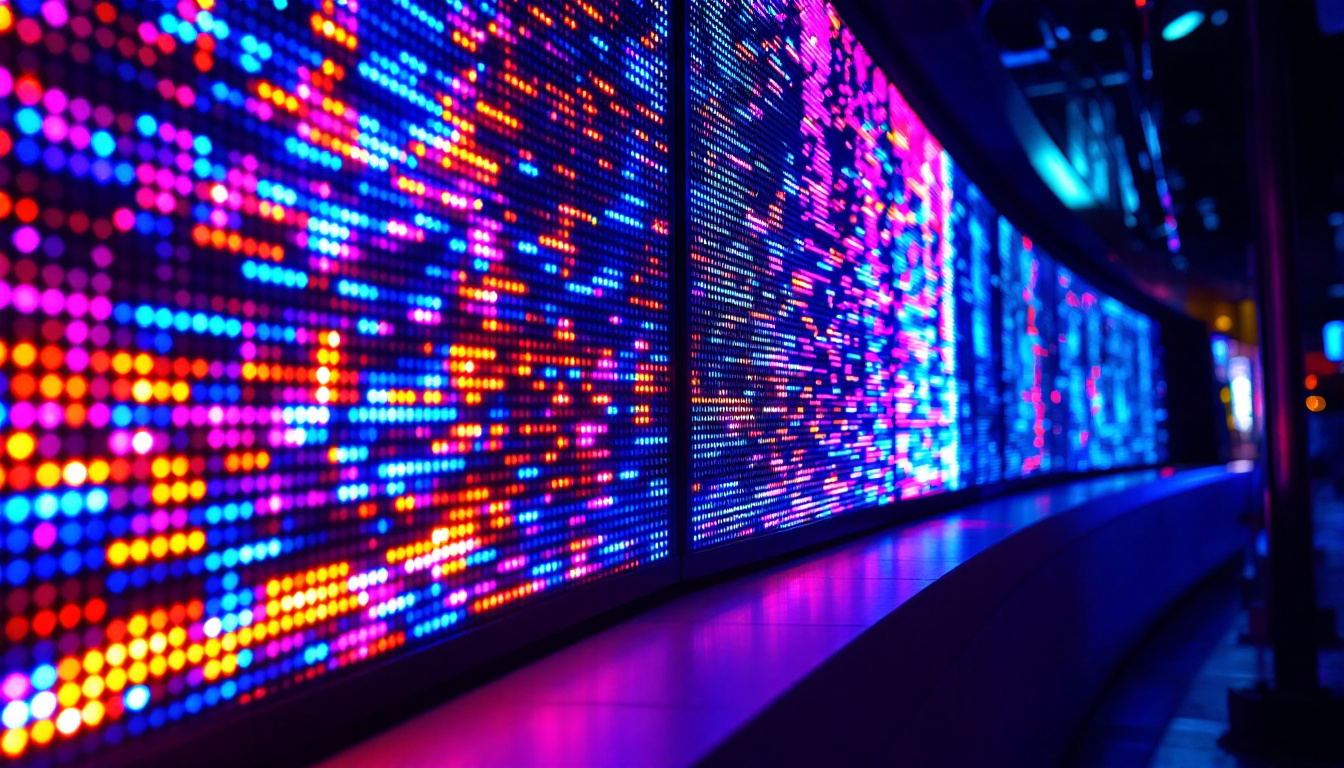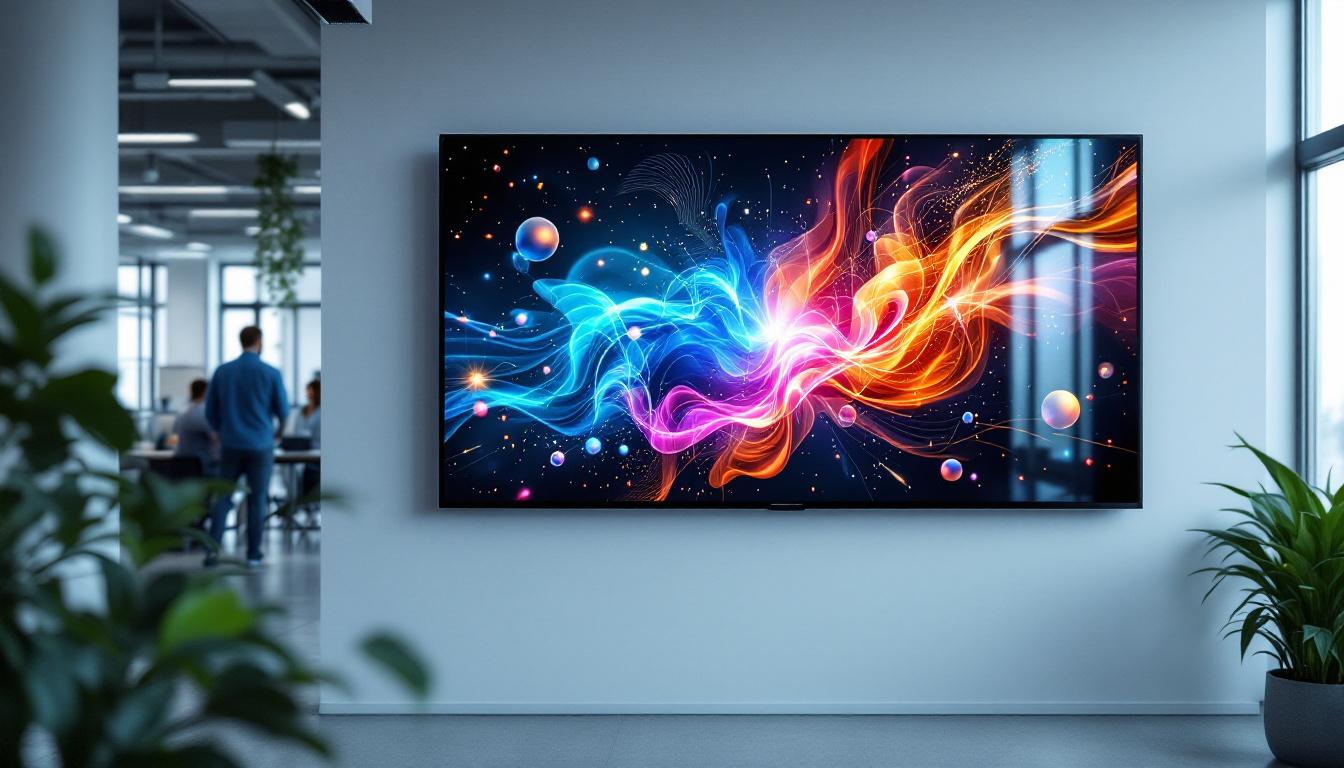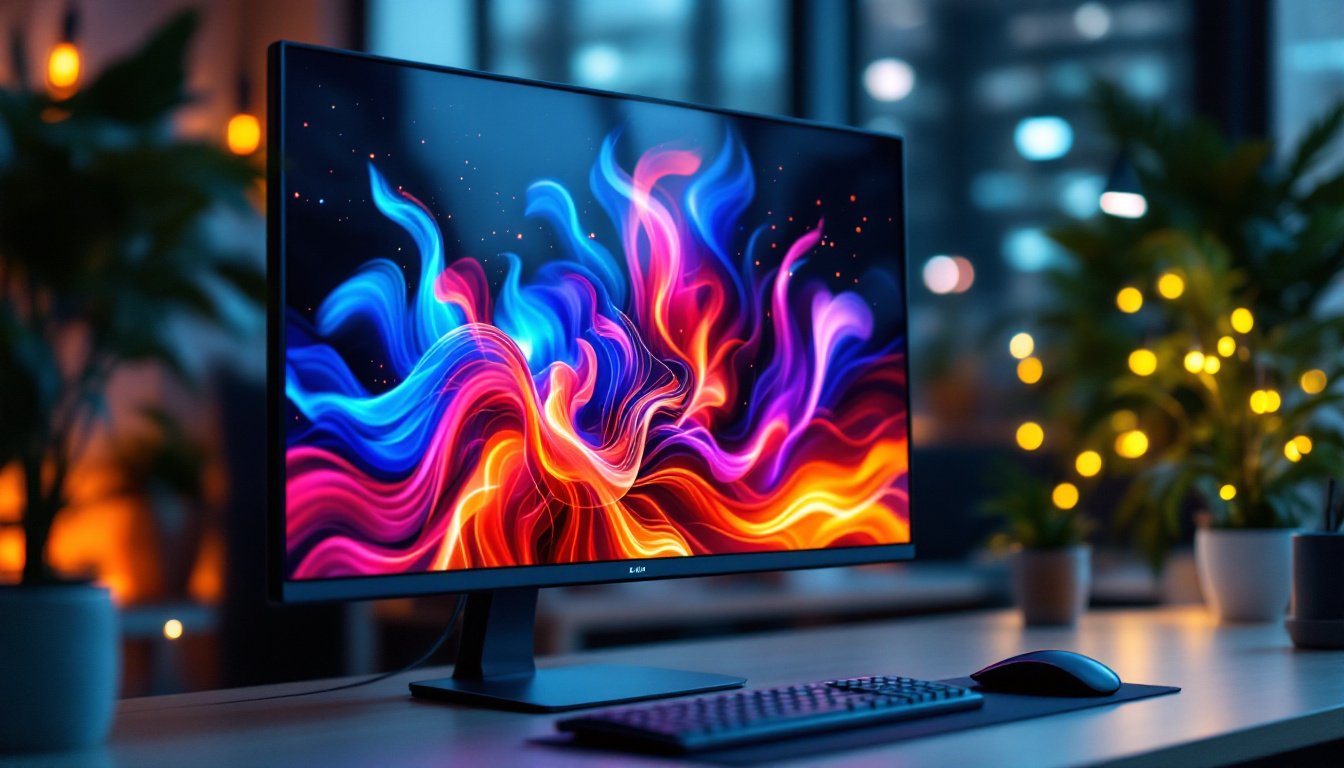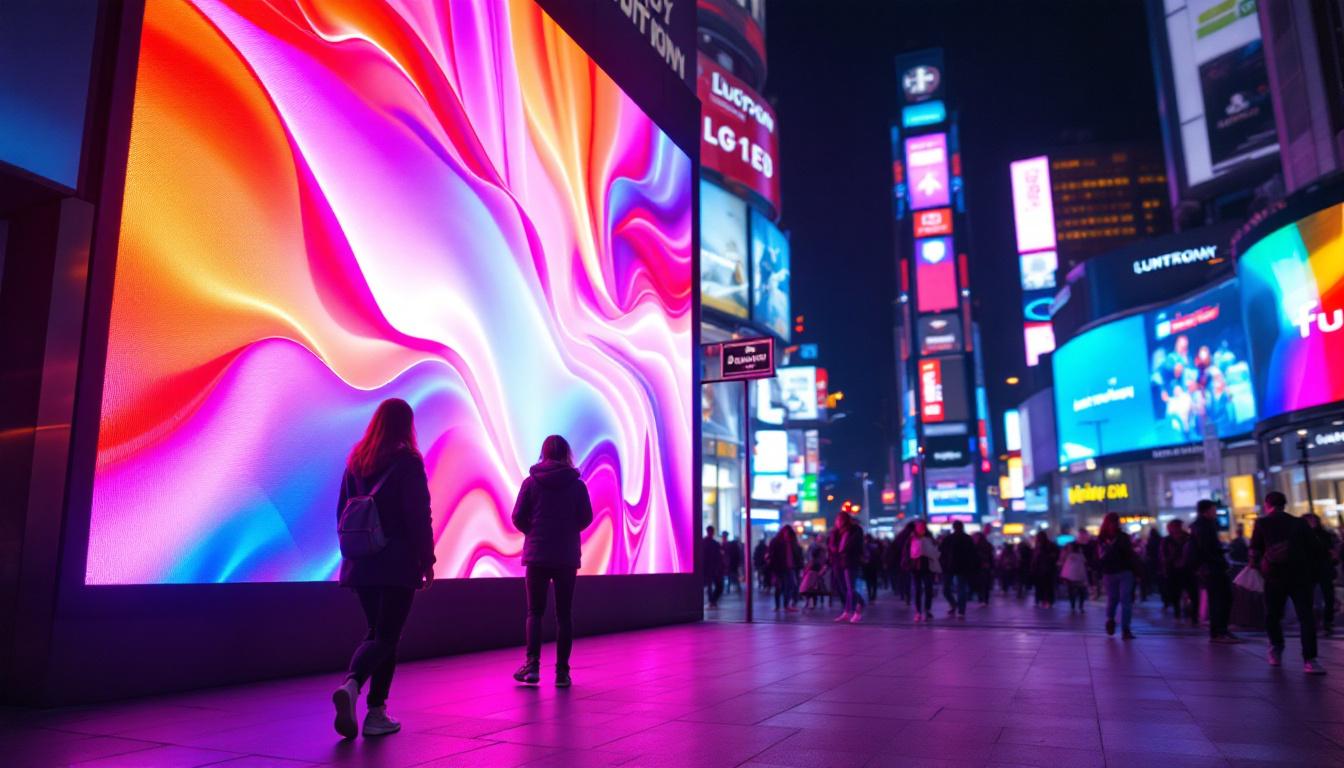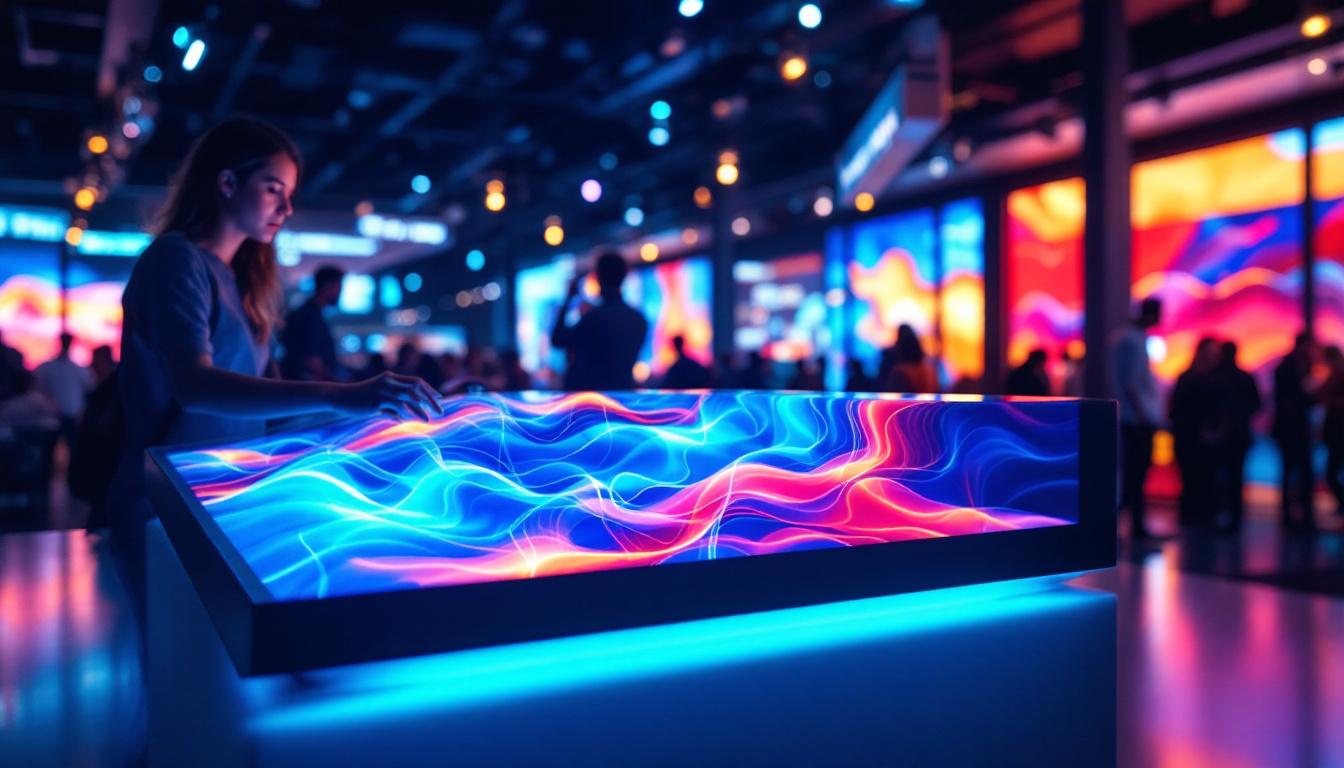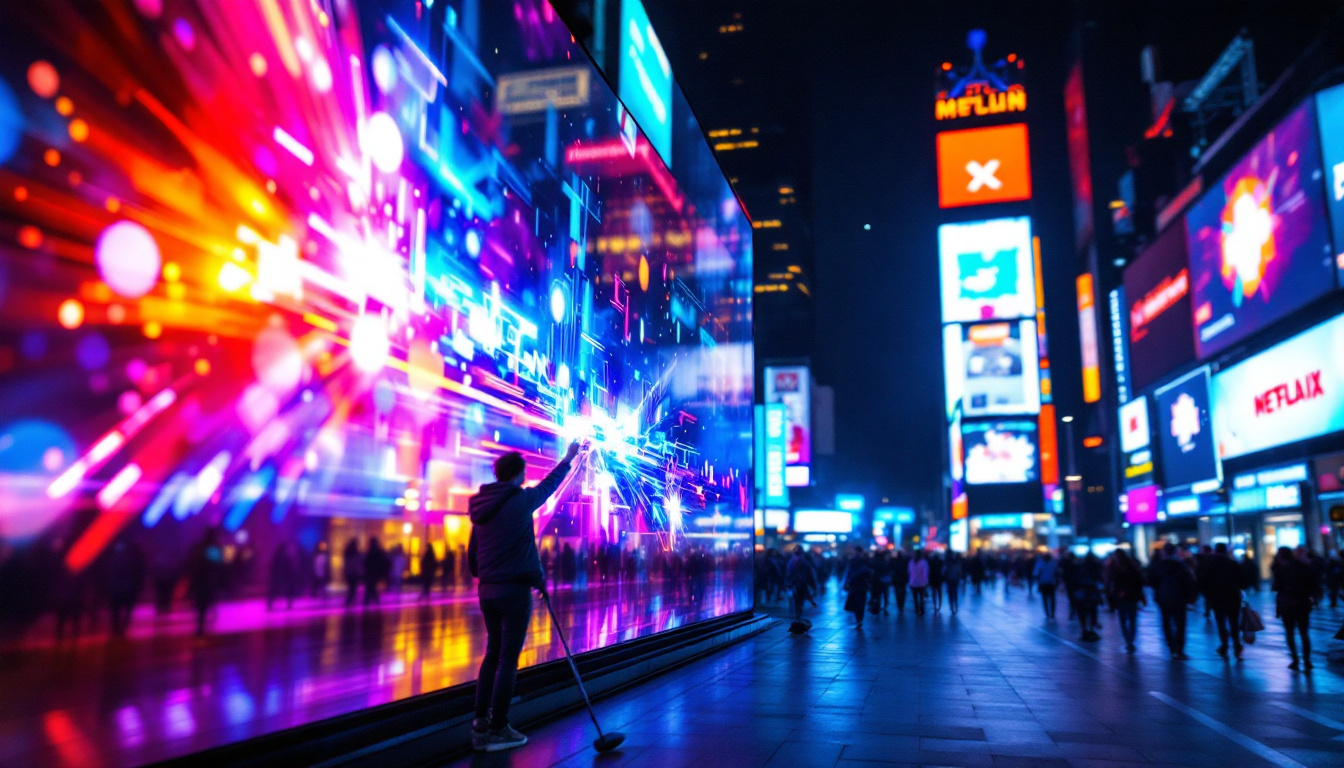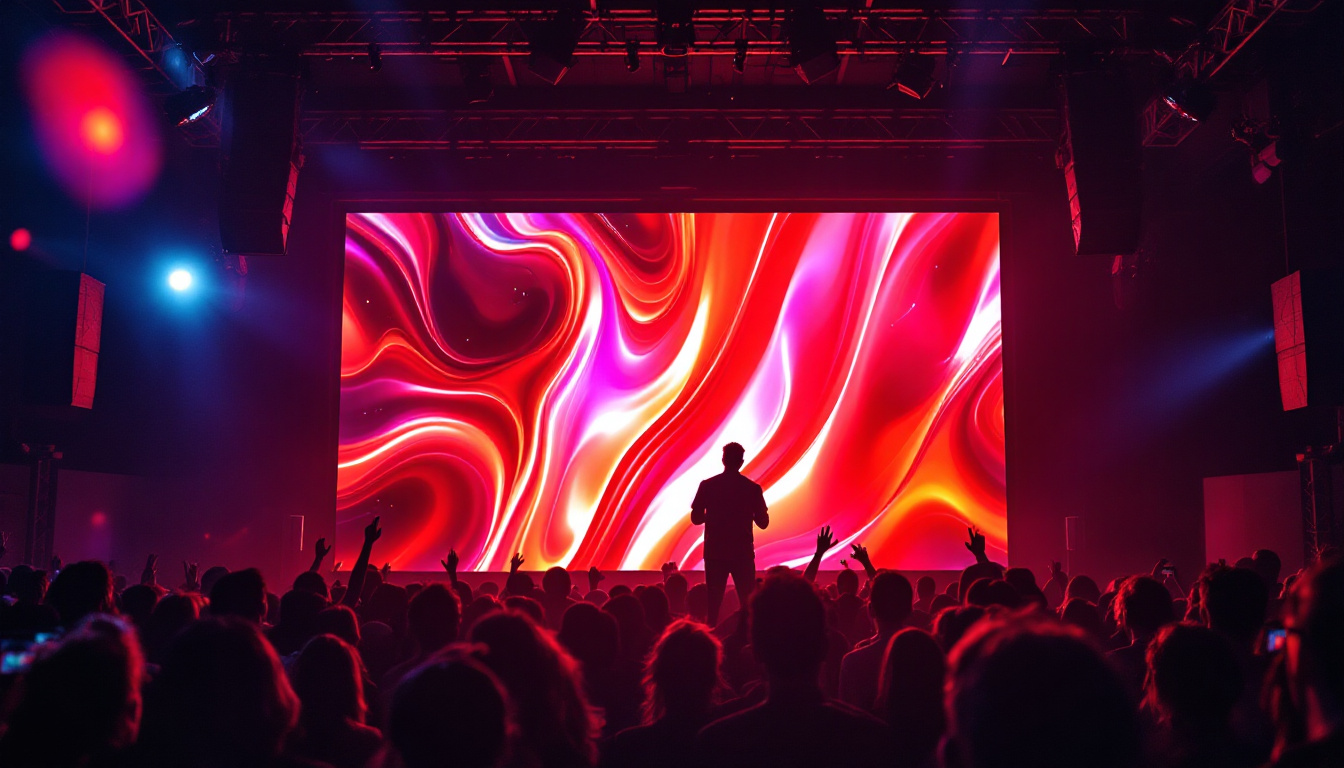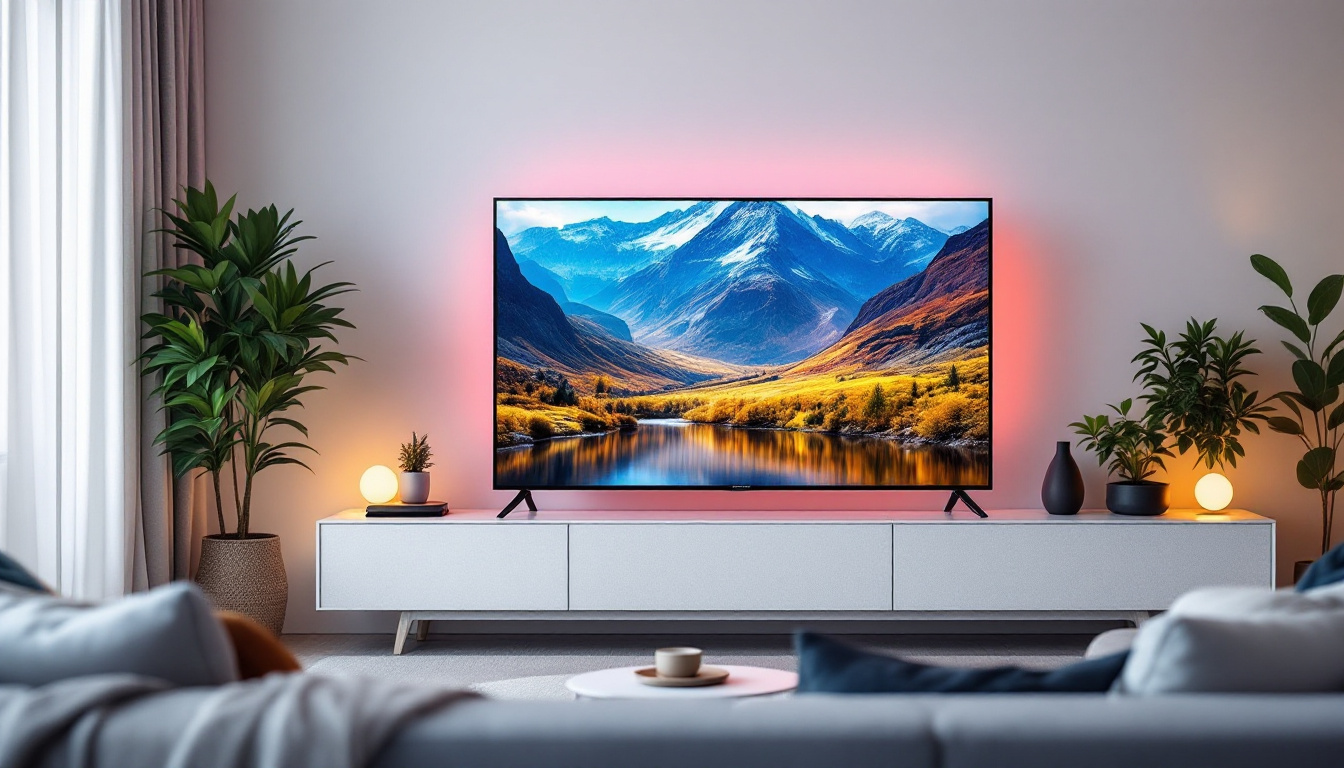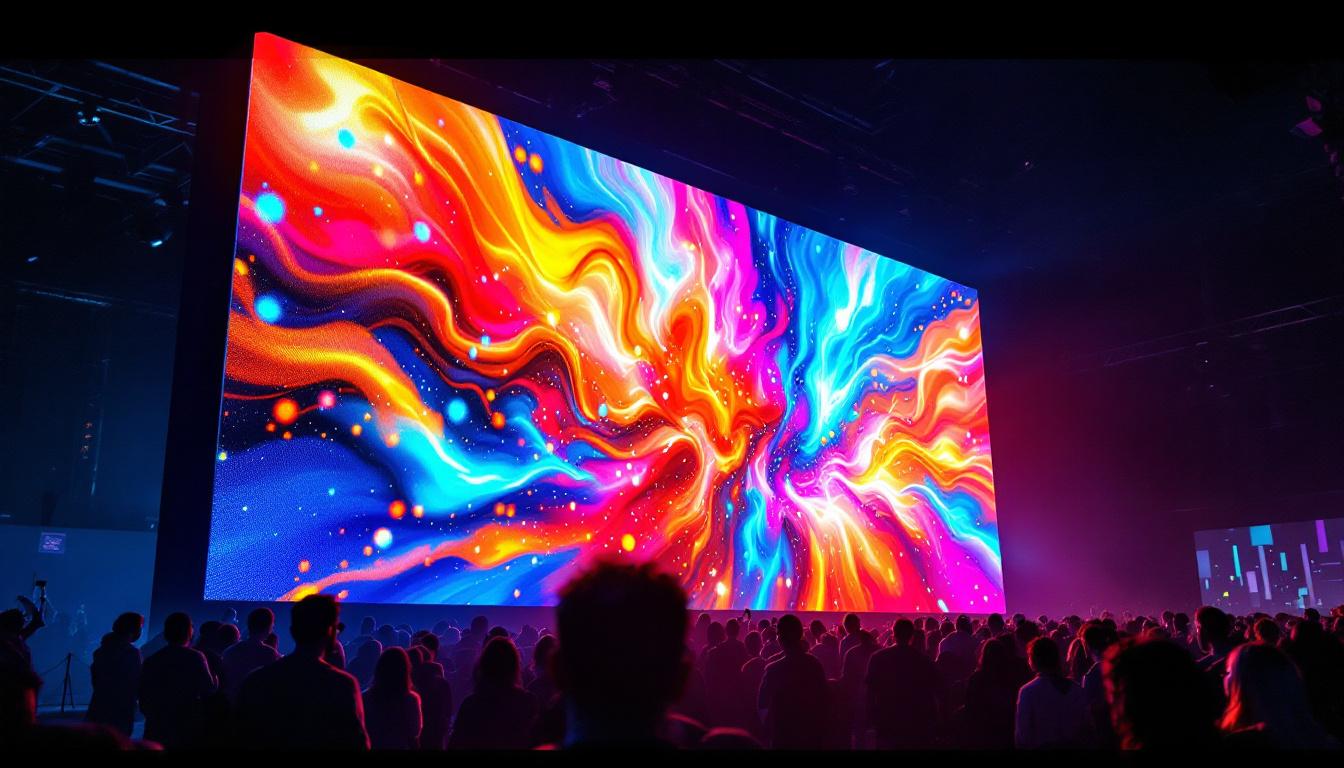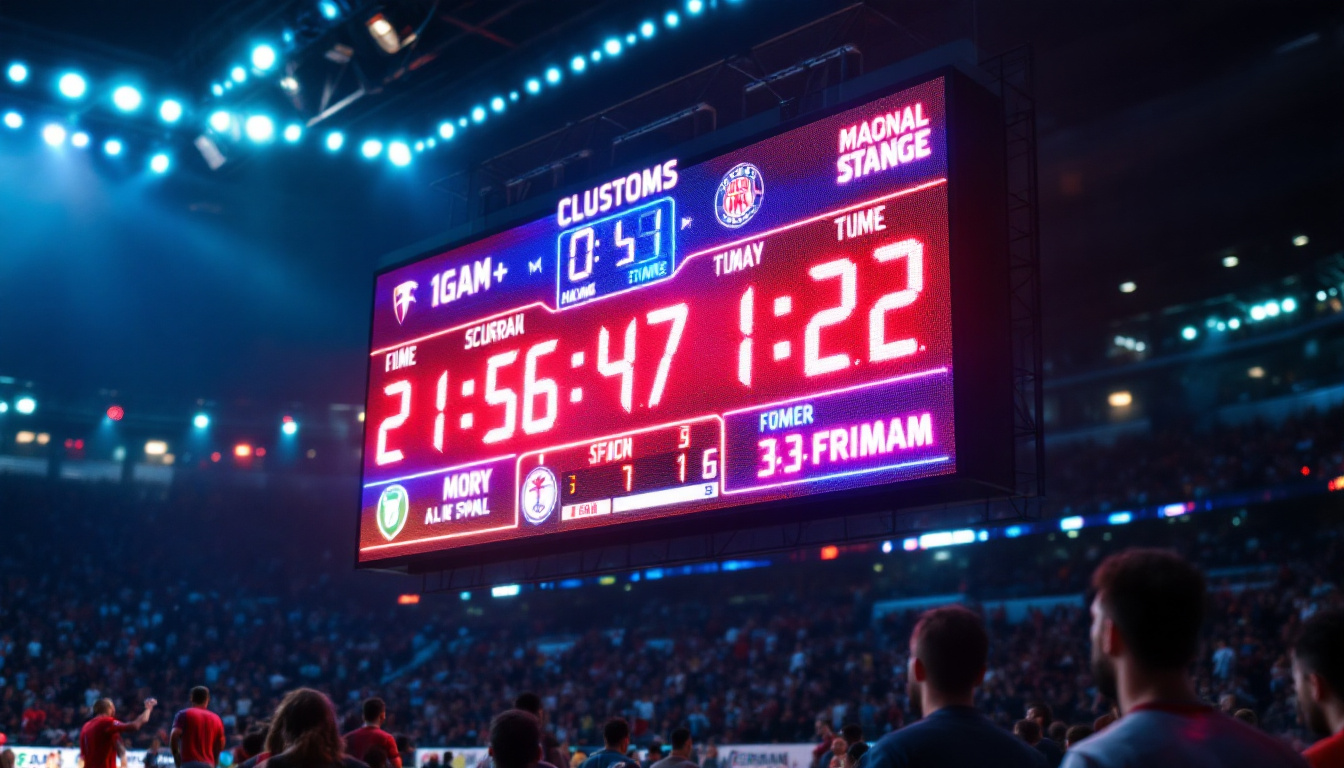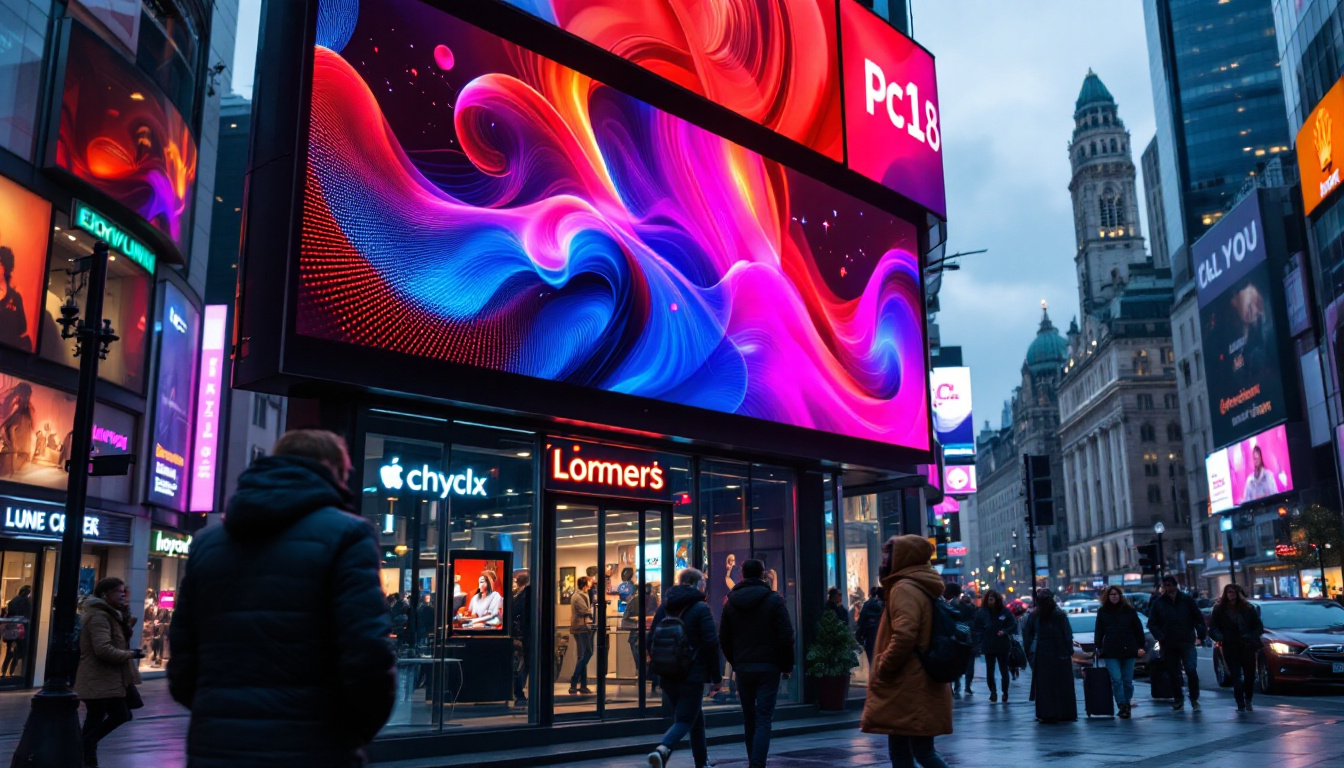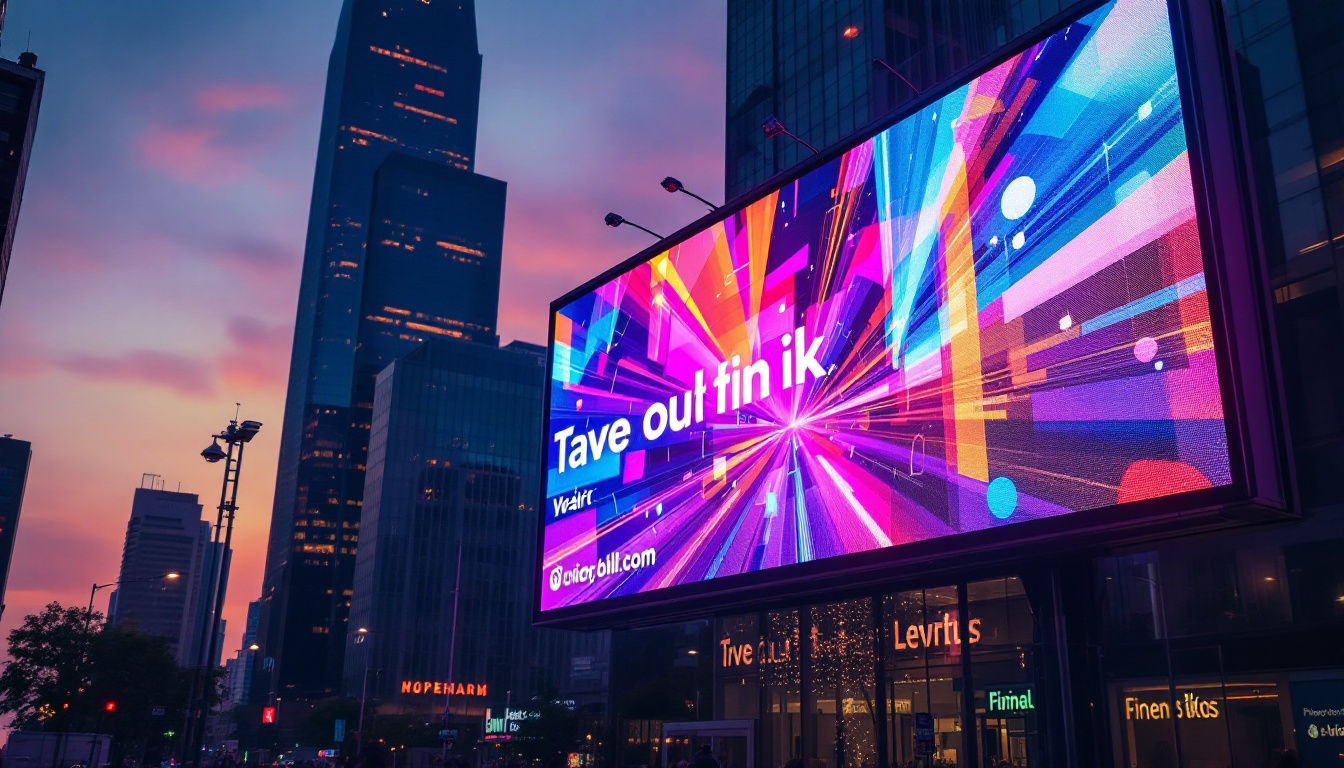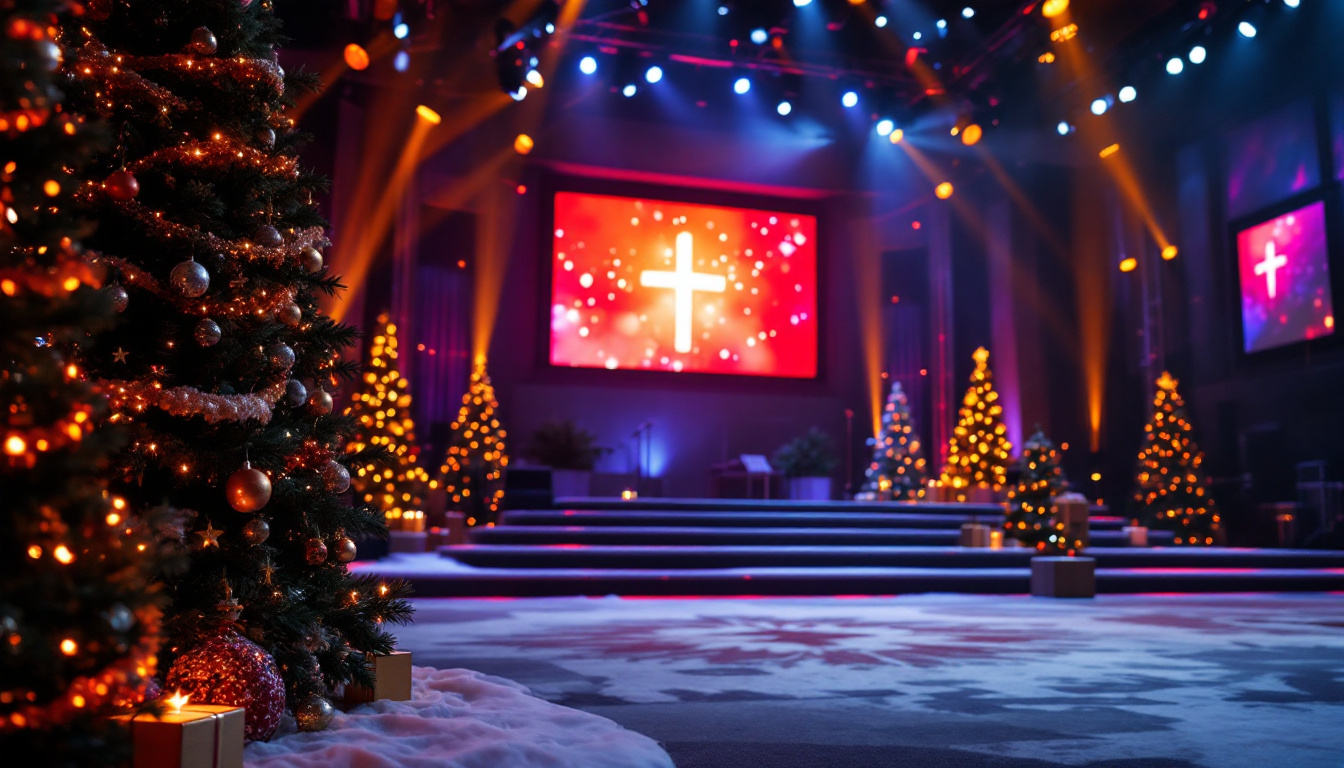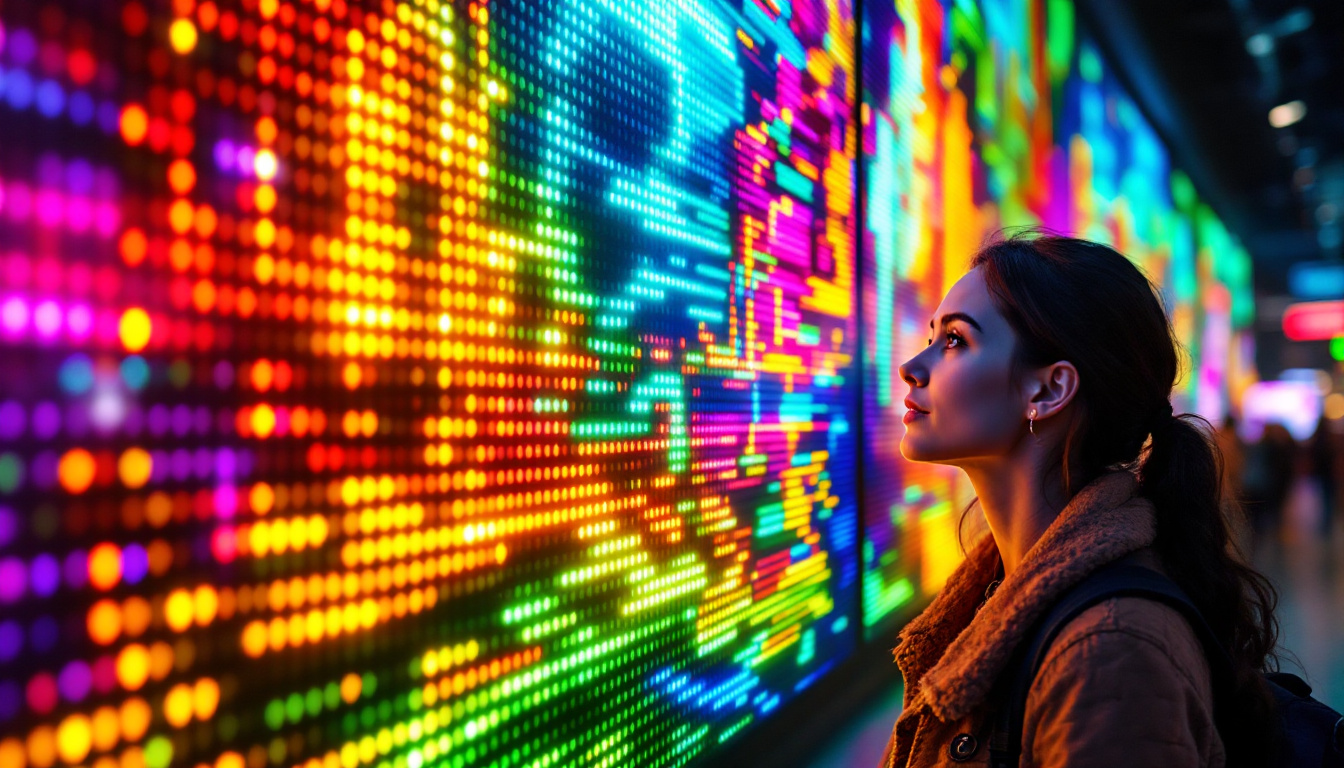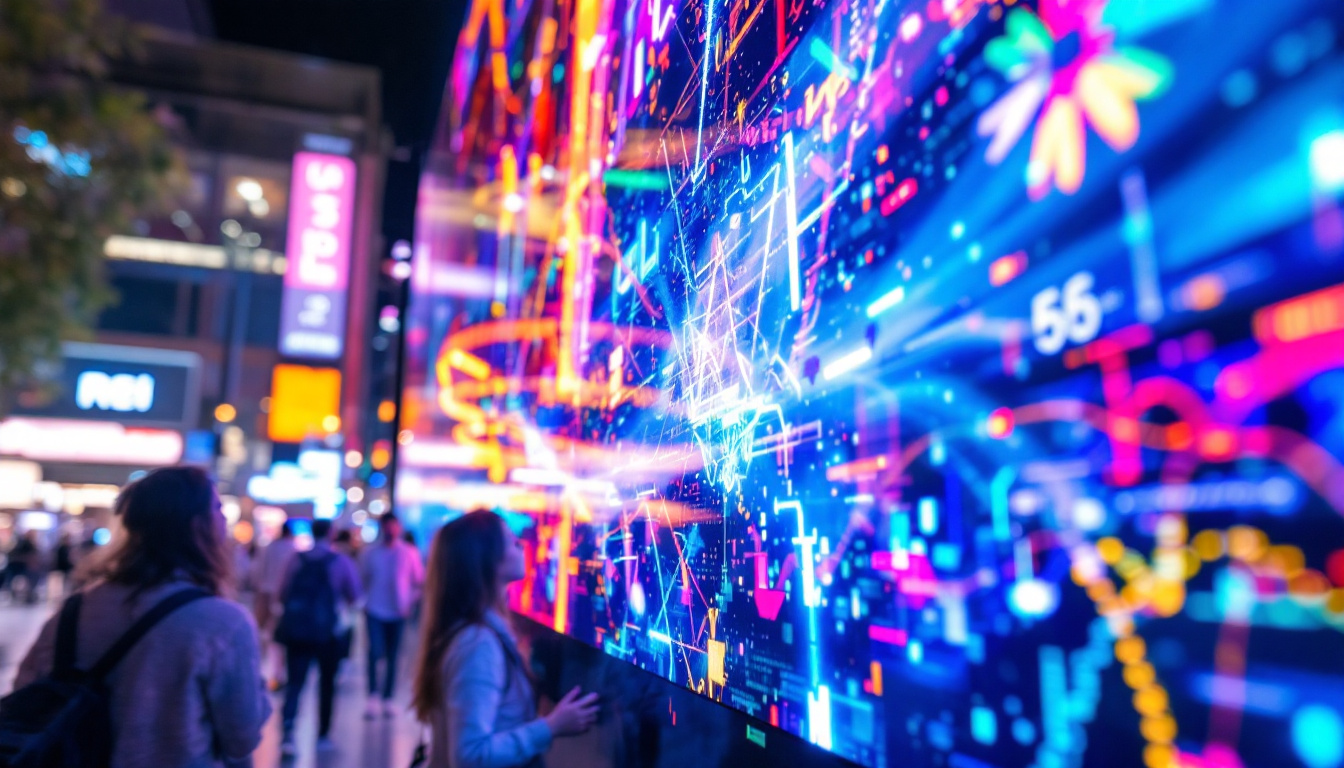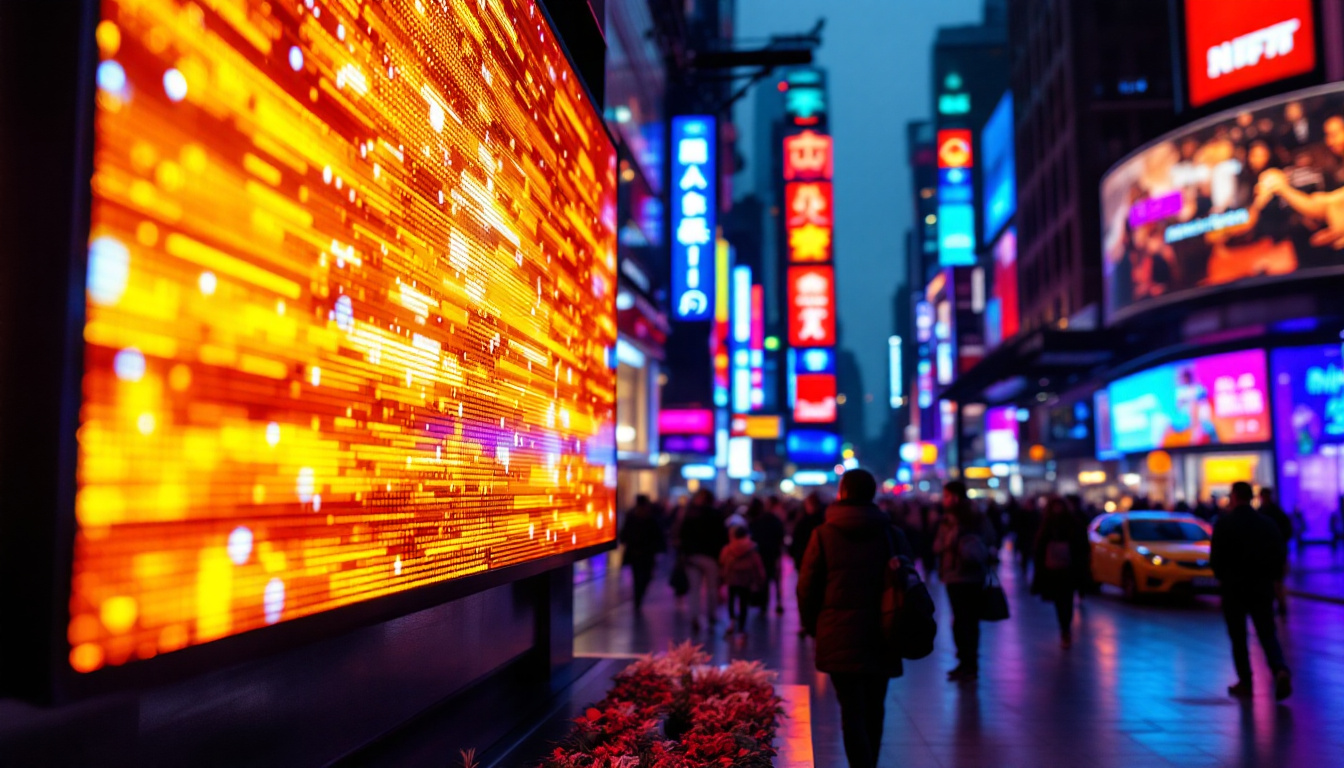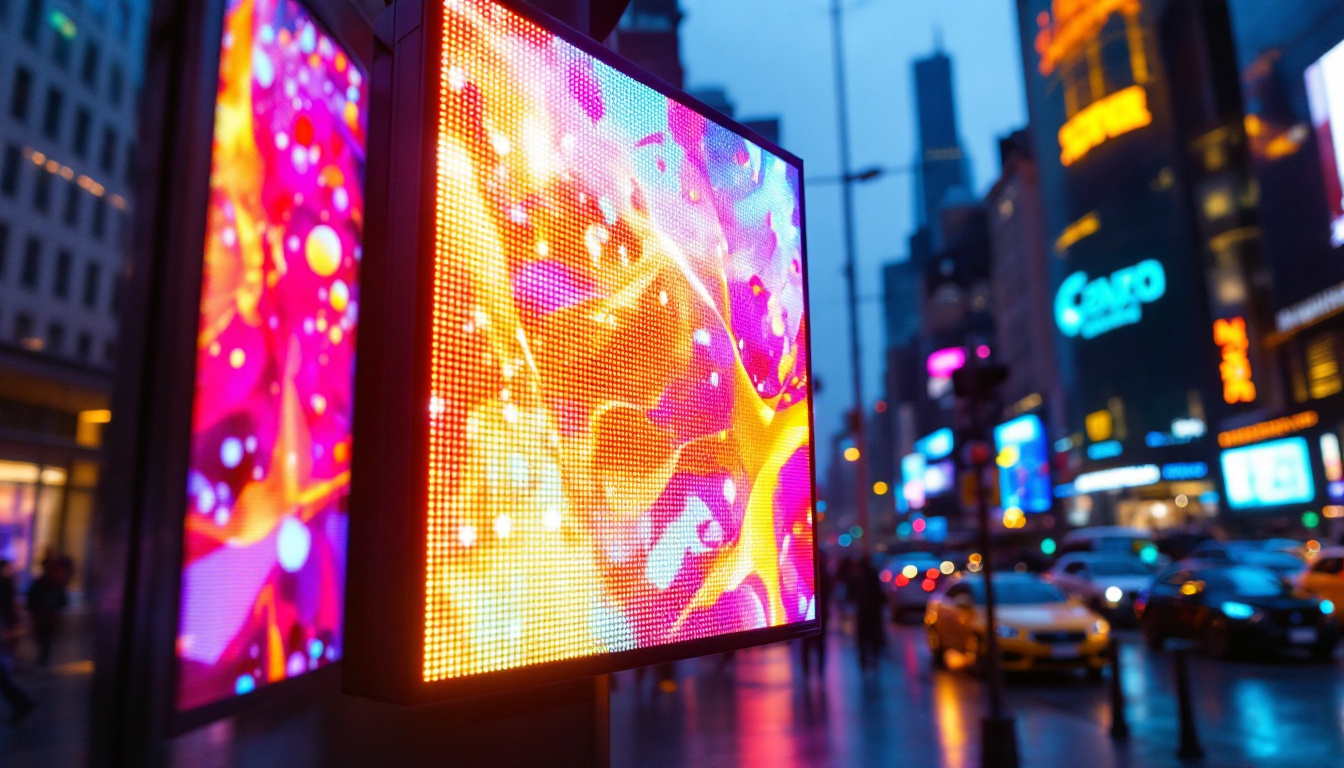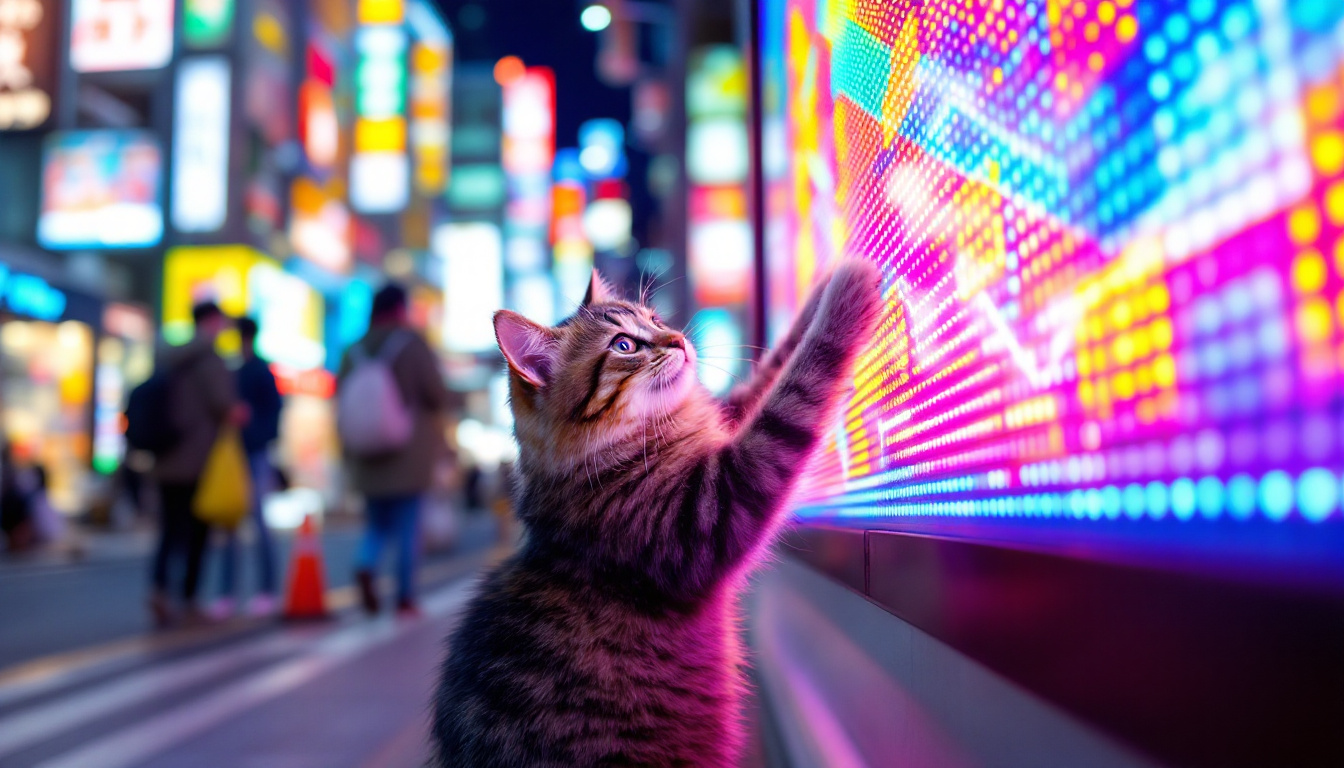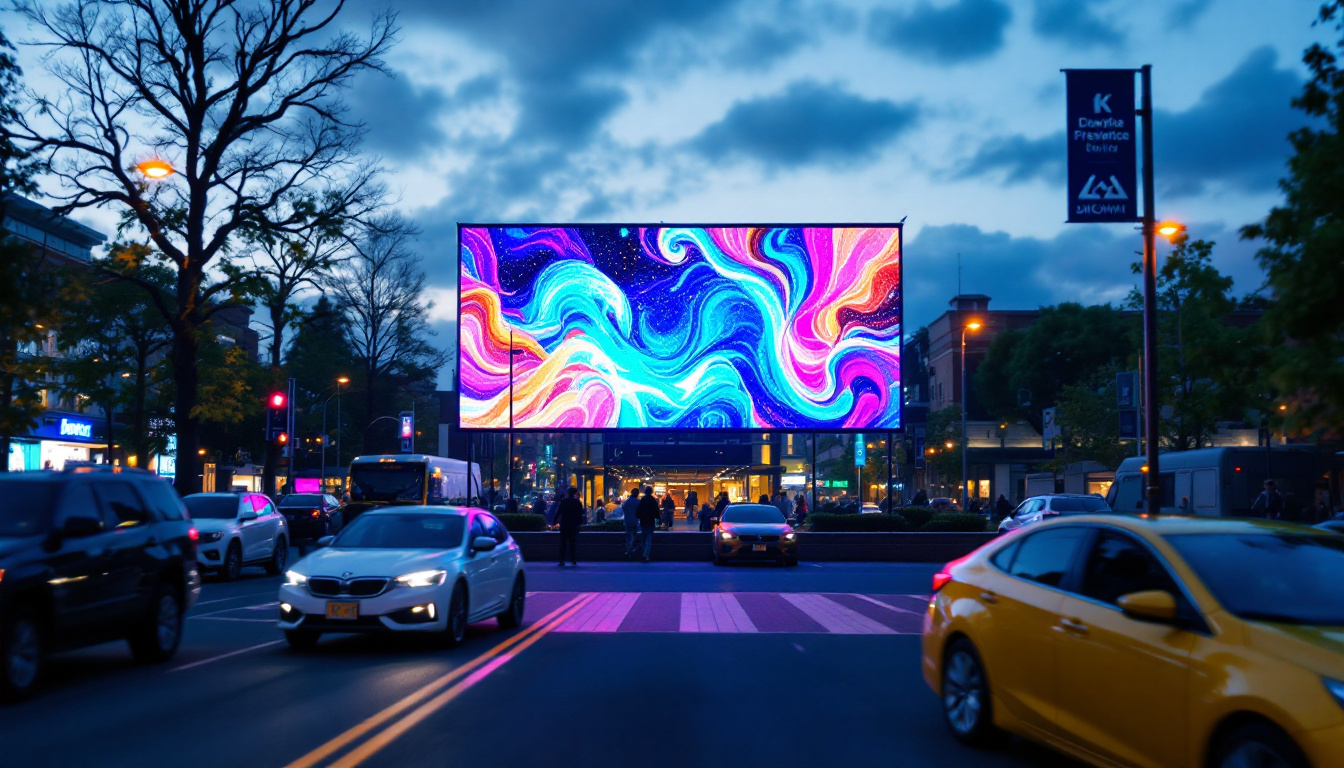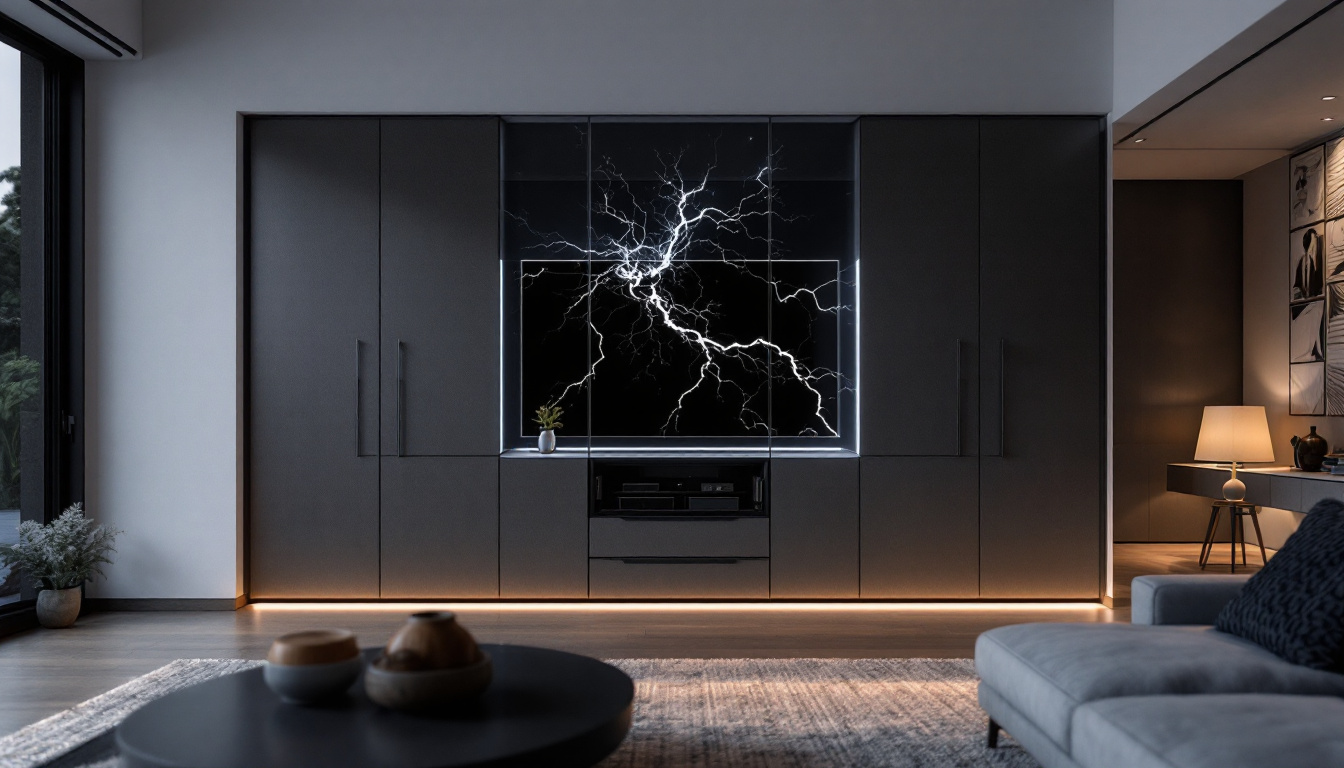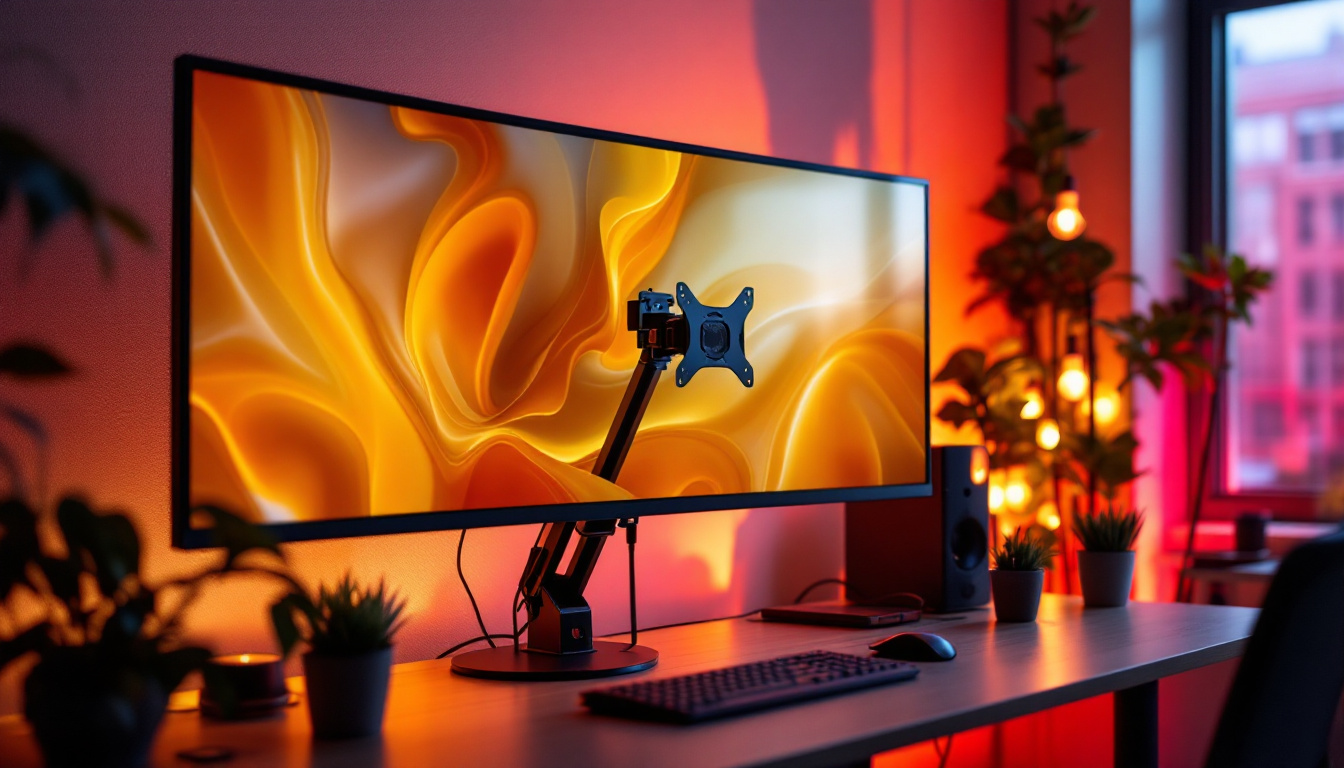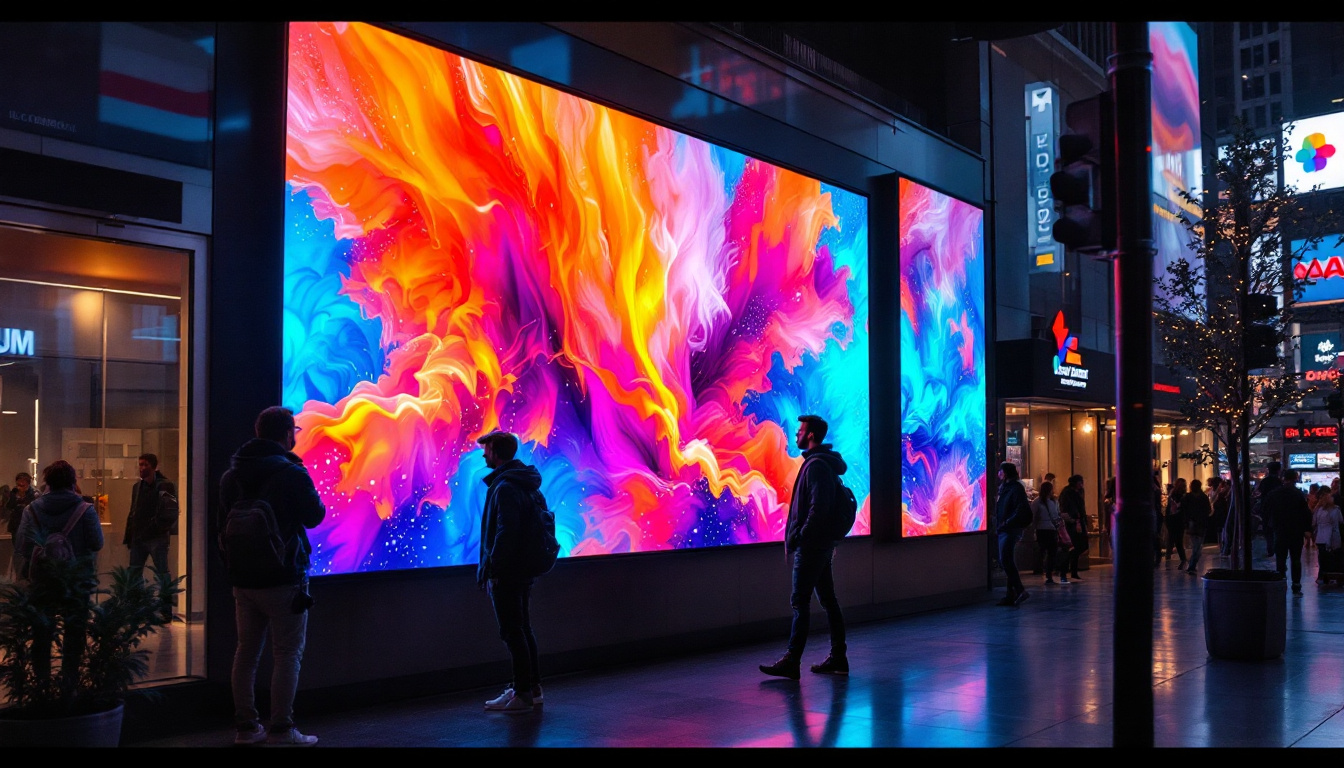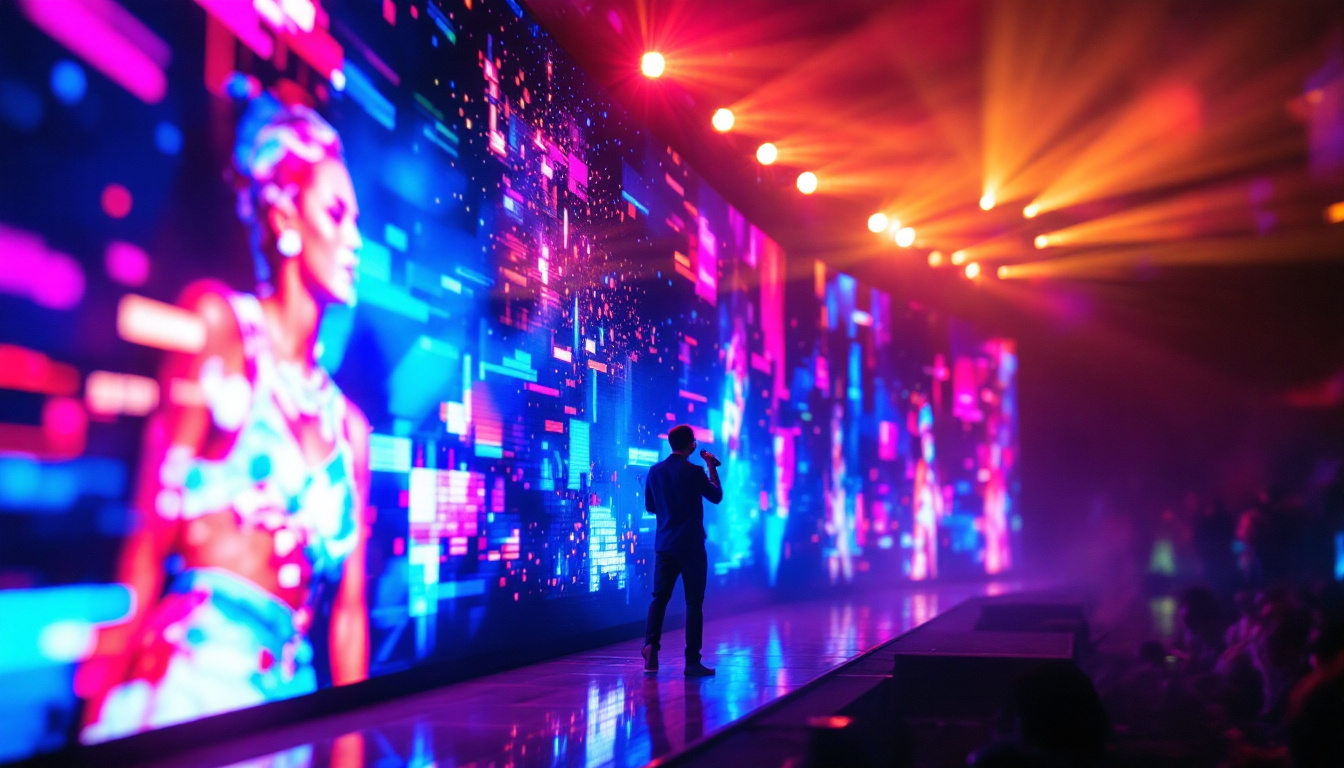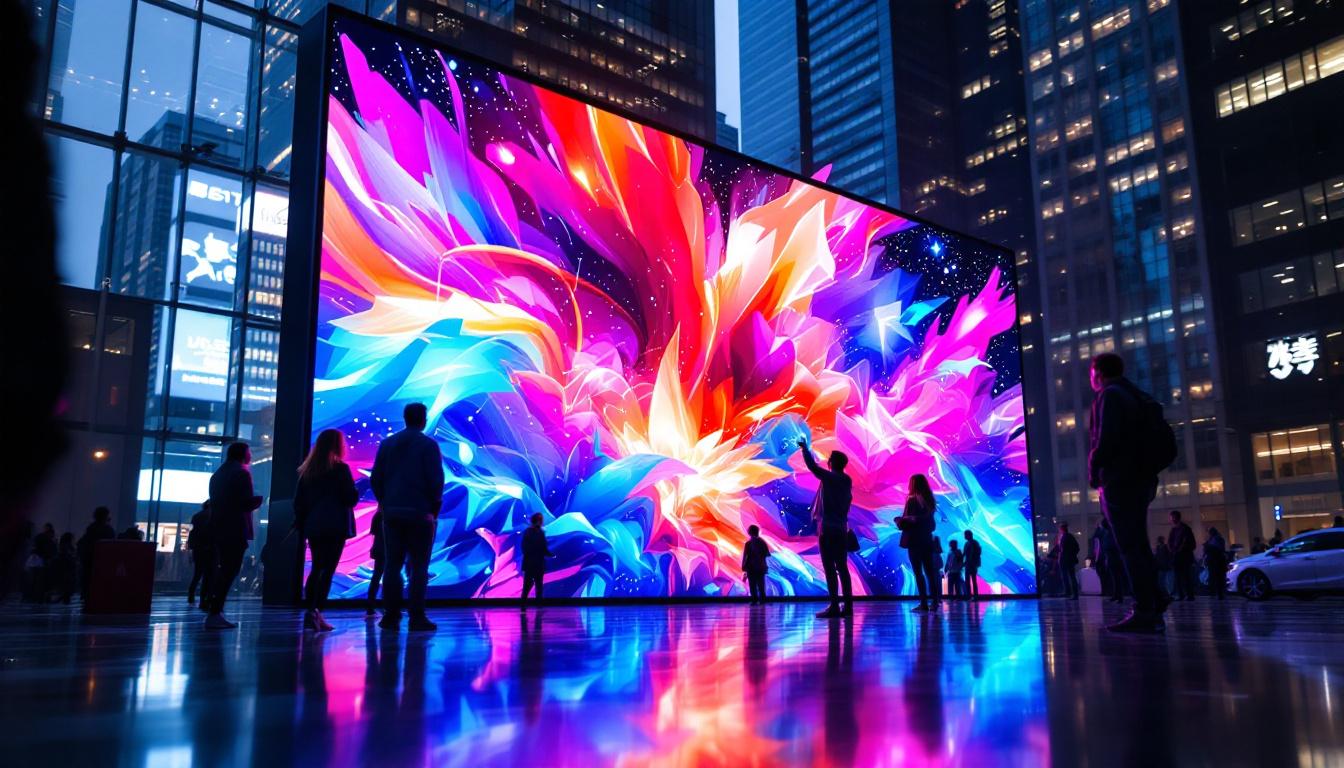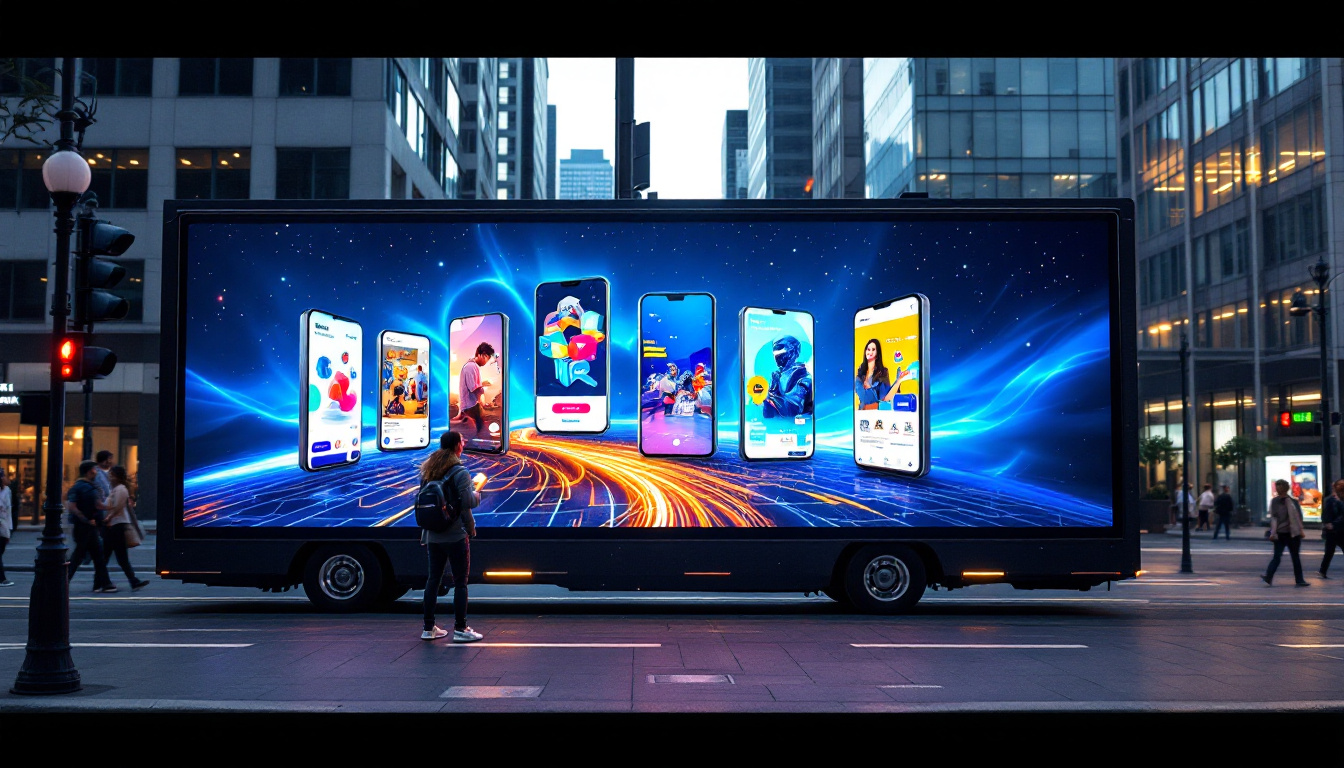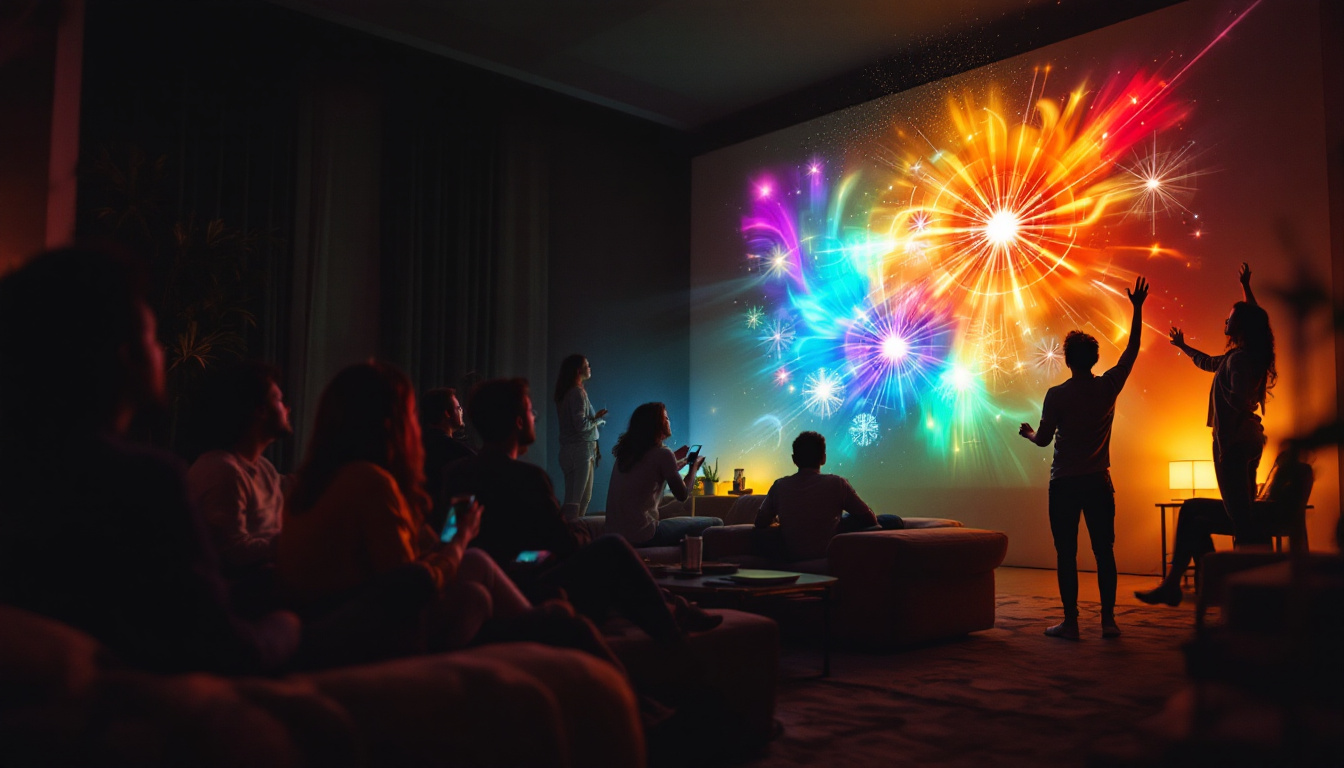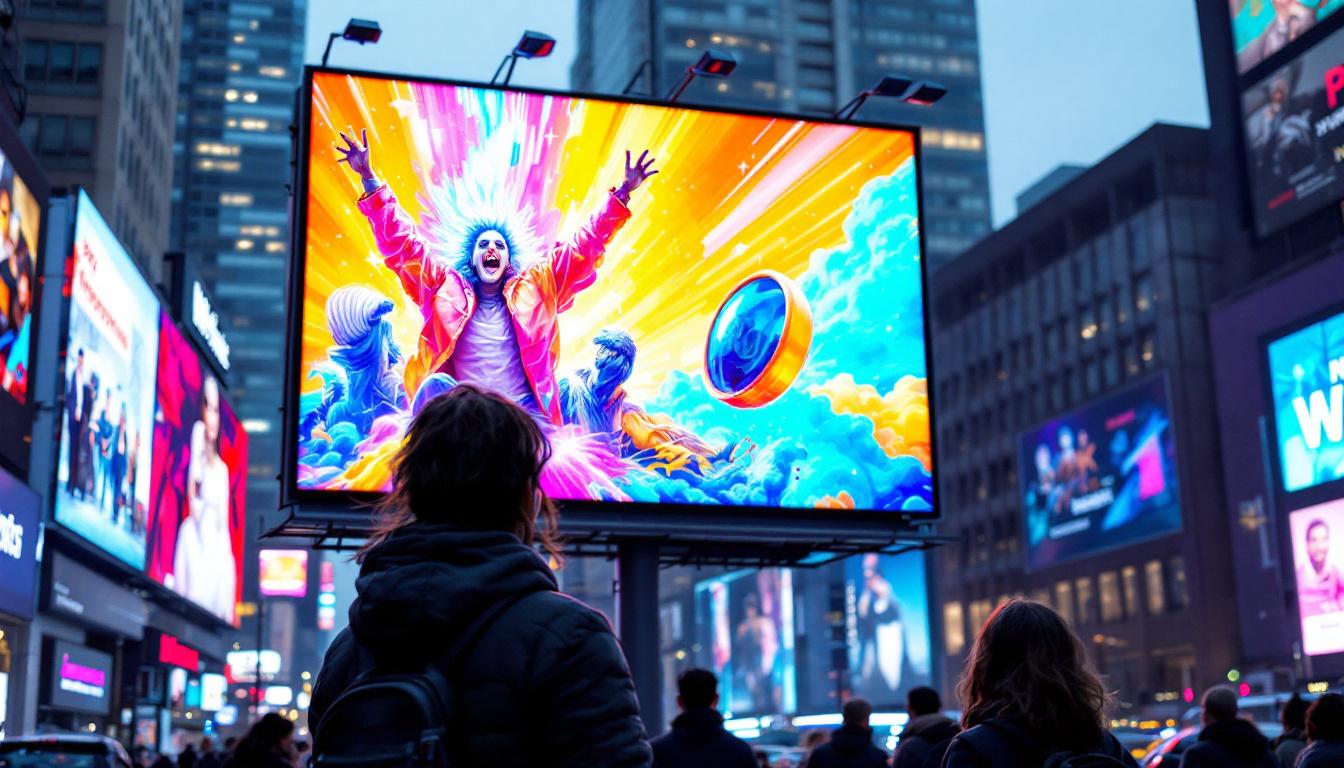In recent years, LED displays have become ubiquitous in various sectors, from advertising to entertainment and even in our daily lives. One of the leading companies in this domain is Ledbcn, known for its innovative and high-quality LED display solutions. This article delves into the intricacies of LED technology, the types of displays available, and the applications that make them indispensable.
Understanding LED Technology
LED, or Light Emitting Diode, is a semiconductor device that emits light when an electric current passes through it. The technology has evolved significantly since its inception, leading to a wide array of applications and improvements in efficiency and brightness.
The Science Behind LEDs
The fundamental principle of LED technology lies in electroluminescence. When electrons recombine with holes in a semiconductor material, energy is released in the form of photons, which we perceive as light. This process is highly efficient, resulting in lower energy consumption compared to traditional lighting solutions.
Moreover, LEDs can produce a spectrum of colors without the need for filters, making them versatile for various applications. The combination of different colored LEDs can create millions of hues, allowing for dynamic displays that can be customized for any occasion. This versatility has not only transformed aesthetic applications but has also paved the way for advancements in areas like horticulture, where specific light wavelengths can enhance plant growth and productivity.
Types of LED Displays
LED displays come in various forms, each tailored to specific needs and environments. The most common types include:
- Indoor LED Displays: These are designed for use in controlled environments, such as shopping malls, conference rooms, and theaters. They typically have a higher pixel density, resulting in sharper images and text.
- Outdoor LED Displays: Built to withstand harsh weather conditions, outdoor displays are often used for billboards and public signage. They are designed to be bright enough to be visible in direct sunlight.
- Transparent LED Displays: These innovative displays allow for visibility through the screen while still showcasing images or videos. They are increasingly popular in retail environments and architectural applications.
In addition to these common types, there are also specialized LED displays such as flexible LED screens, which can be bent or shaped to fit unique installations, and high-definition LED walls that offer stunning visuals for concerts and events. The evolution of LED technology has also led to the development of smart LED displays that can be integrated with IoT devices, enabling real-time updates and interactivity. This integration allows for a more engaging user experience, as content can be tailored to the audience’s preferences and behaviors, making LED displays not just a source of information but also a dynamic communication tool.
Furthermore, the environmental impact of LED technology cannot be overlooked. LEDs are known for their longevity, often lasting up to 25,000 hours or more, which significantly reduces waste compared to traditional incandescent bulbs. Their low energy consumption also contributes to lower carbon footprints, making them a more sustainable choice for both residential and commercial lighting solutions. As the demand for energy-efficient technologies continues to grow, LEDs are at the forefront of the lighting revolution, driving innovations that prioritize both performance and environmental responsibility.
Applications of LED Displays
LED displays have found their way into numerous sectors, revolutionizing how information is conveyed and enhancing user experiences. Their versatility and adaptability make them suitable for a wide range of applications.
Advertising and Marketing
One of the most prominent uses of LED displays is in advertising. Billboards and digital signage have transformed the landscape of marketing, allowing brands to reach their audience with vibrant visuals and dynamic content. The ability to change advertisements in real-time means that businesses can tailor their messaging based on time of day, audience demographics, or even current events.
Moreover, LED displays can attract attention more effectively than traditional print ads, thanks to their brightness and motion capabilities. This has led to increased engagement and higher conversion rates for advertisers.
Entertainment and Events
In the entertainment industry, LED displays are essential for concerts, festivals, and sporting events. Large screens provide audiences with a better view of performances, ensuring that even those seated far from the stage can enjoy the experience. The vibrant colors and high resolution of LED screens enhance the overall atmosphere, making events more memorable.
Additionally, LED technology is used in stage design, allowing for creative lighting effects and backdrops that can change throughout a performance. This versatility adds depth and dimension to live shows, captivating audiences and enhancing storytelling.
Corporate and Educational Use
LED displays are increasingly being adopted in corporate environments for presentations, meetings, and training sessions. Their clarity and brightness ensure that information is easily visible to all participants, fostering better communication and collaboration.
In educational settings, schools and universities utilize LED displays for announcements, educational content, and interactive learning experiences. This technology not only engages students but also provides a modern approach to education, making learning more dynamic and interactive.
Benefits of LED Displays
The advantages of using LED displays extend beyond mere aesthetics. They offer several benefits that make them a preferred choice for various applications.
Energy Efficiency
One of the most significant benefits of LED technology is its energy efficiency. Compared to traditional lighting solutions, LEDs consume significantly less power, which translates to lower electricity bills and a reduced carbon footprint. This is particularly important for businesses looking to enhance their sustainability practices.
Moreover, LED displays have a longer lifespan, often lasting tens of thousands of hours. This durability means less frequent replacements, further contributing to energy savings and reducing waste.
High Brightness and Visibility
LED displays are known for their exceptional brightness, making them suitable for both indoor and outdoor applications. Their visibility in various lighting conditions ensures that content remains clear and engaging, regardless of the environment.
This high level of brightness is particularly beneficial for outdoor advertising, where sunlight can wash out traditional displays. LED technology ensures that messages are delivered effectively, even in direct sunlight.
Customization and Flexibility
Another advantage of LED displays is their flexibility in terms of design and customization. They can be configured in various shapes and sizes, allowing for creative installations that suit specific environments or branding needs.
Furthermore, the ability to change content easily means that businesses can adapt their messaging quickly, whether it’s for seasonal promotions, special events, or real-time updates. This adaptability is crucial in today’s fast-paced market.
Challenges and Considerations
While LED displays offer numerous benefits, there are also challenges and considerations that potential users should be aware of before investing in this technology.
Initial Costs
The initial investment for LED displays can be higher than traditional display technologies. Although the long-term savings on energy and maintenance may offset these costs, businesses must consider their budget and return on investment when making a decision.
It’s essential to conduct a thorough analysis of the potential benefits versus the initial expenditure to ensure that the investment aligns with overall business goals.
Technical Expertise
Installing and maintaining LED displays may require technical expertise that not all businesses possess in-house. This can lead to additional costs associated with hiring external professionals for installation and ongoing maintenance.
Ensuring that staff are adequately trained to operate and troubleshoot LED displays is also crucial. Investing in training can help maximize the benefits of the technology while minimizing downtime.
Future Trends in LED Display Technology
The landscape of LED display technology continues to evolve, with numerous trends emerging that promise to shape the future of this industry.
Advancements in Resolution
As technology progresses, the demand for higher resolution displays is on the rise. Innovations in pixel density are leading to displays that offer even sharper images and more vibrant colors. This trend is particularly relevant for applications where detail is crucial, such as in medical imaging or high-end advertising.
With advancements in micro-LED and mini-LED technologies, the future of LED displays looks promising, offering unprecedented clarity and color accuracy.
Integration with Smart Technology
The integration of LED displays with smart technology is another significant trend. This includes the use of sensors and IoT (Internet of Things) capabilities to create interactive and responsive displays. For instance, LED screens can adapt their brightness based on ambient light or change content based on audience engagement.
This level of interactivity not only enhances user experience but also allows for more targeted advertising and content delivery, making LED displays even more effective as marketing tools.
Sustainability Initiatives
As environmental concerns become increasingly prominent, the LED industry is focusing on sustainability. This includes developing eco-friendly materials for displays and improving energy efficiency even further.
Companies are also exploring recycling programs for old LED displays to minimize waste and promote responsible disposal. These initiatives not only benefit the environment but also resonate with consumers who prioritize sustainability in their purchasing decisions.
Conclusion
LED displays have transformed the way information is communicated across various sectors, offering unparalleled brightness, energy efficiency, and versatility. As technology continues to advance, the potential applications and benefits of LED displays will only expand, making them an essential component of modern communication strategies.
Ledbcn stands at the forefront of this evolution, providing innovative solutions that cater to the diverse needs of businesses and organizations. By understanding the intricacies of LED technology, its applications, and the benefits it offers, companies can make informed decisions that enhance their visibility and engagement in an increasingly competitive landscape.
As the future unfolds, embracing LED technology will not only be a strategic advantage but also a step towards a more sustainable and visually engaging world.
Discover Cutting-Edge LED Displays with LumenMatrix
Ready to elevate your visual communication and captivate your audience with the latest in LED display technology? Look no further than LumenMatrix. As a pioneer in the industry, we offer an extensive range of innovative LED display solutions, including Indoor and Outdoor LED Wall Displays, Vehicle LED Displays, LED Poster Displays, LED Sports Displays, Floor LED Displays, Custom LED Displays, All-in-One LED Displays, and LED Transparent Displays. Our mission is to revolutionize your visual experience, ensuring your brand stands out with clarity and impact. Check out LumenMatrix LED Display Solutions today and see how we can help you share your message with the world.

